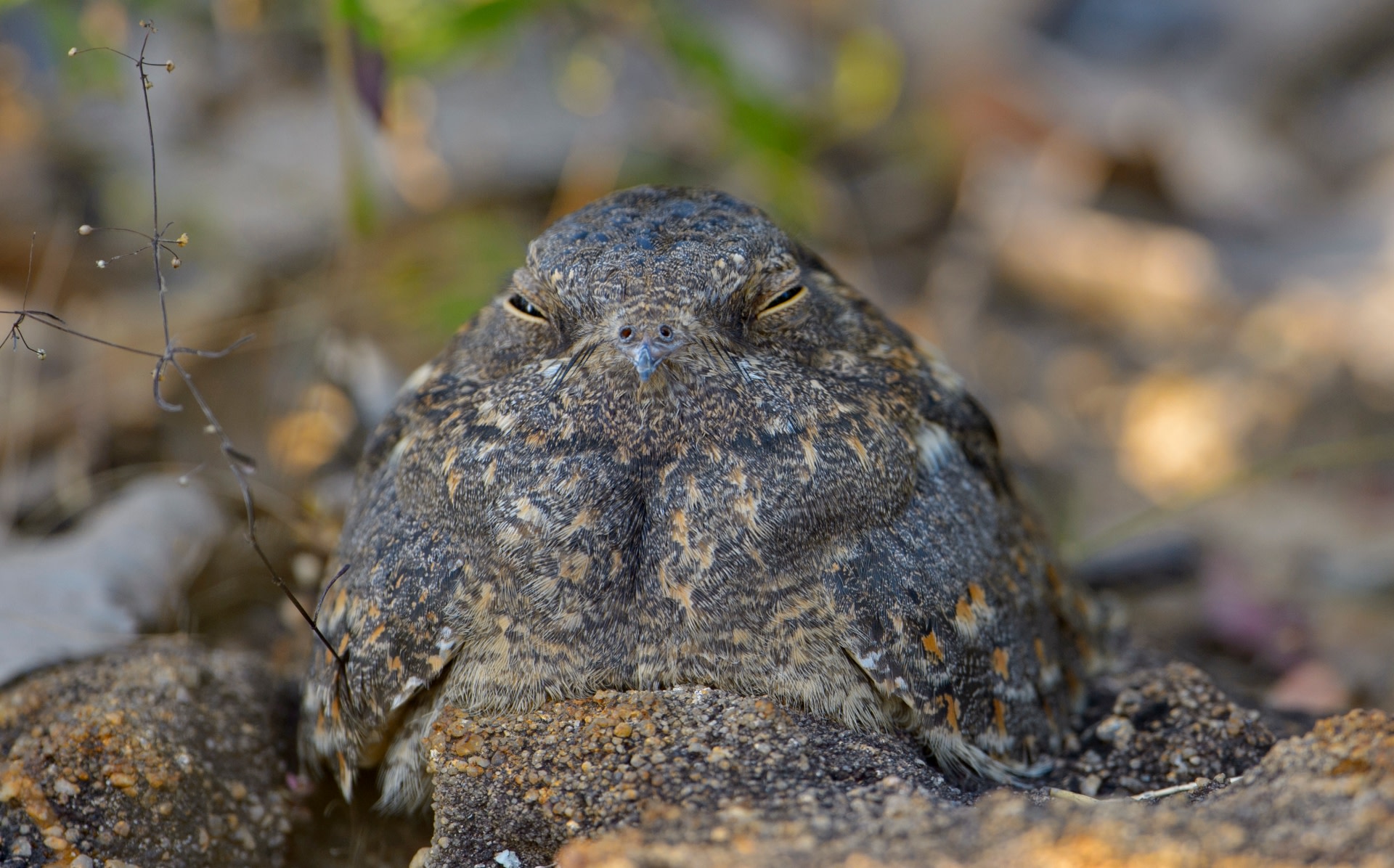 Listen to this article
•
15:34 min
Listen to this article
•
15:34 min
Hiding in plain sight: The Indian nightjar (Caprimulgus asiaticus) is a common species found across India, except at high elevations or in very dense forests. In wooded areas, scrublands, fields, and gardens across India, this palm-sized brownish bird sits so still on the ground that it is not easy to spot it even at a short distance.
Blending in: Variegated grey-brown feathers, the colour of sand or dry leaves work out perfectly for this tiny, ashy bird with a short tail. It merges easily into its surroundings. Black streaks and white patches give the nightjar a mottled appearance, aiding its camouflage against the rocks, shrubs, and soil.

A close-up of a nightjar in Bandhavgarh National Park reveals its mottled colouring, which keeps it hidden from predators such as hawks and owls. Cover Photo: Dhritiman Mukherjee
The Hangout: The nightjar rarely inhabits high perches. Though it is not a flightless bird, it mostly spends its days snoozing on the ground in open landscapes, or on low branches of trees. A sleeping bird at ground level is particularly susceptible to threats, from a variety of predators including humans.
Defence mechanism: At breeding time, nightjars lay their eggs on bare ground, in a well-hidden spot. Protection against predators becomes doubly difficult at this stage. A mother will sit tight on her eggs, even in the face of imminent danger. Flattened as much as possible against its backdrop, a nightjar closes its eyes almost completely, and stays absolutely still. More than anything else, camouflage is the nightjar’s biggest defence mechanism.
Spot it: The nightjar is mostly active only at dawn and dusk, when it flies about scouting for tiny insects. You’ll only realise it is hidden on the ground if you hear the distinct click-click-click call it emits.





